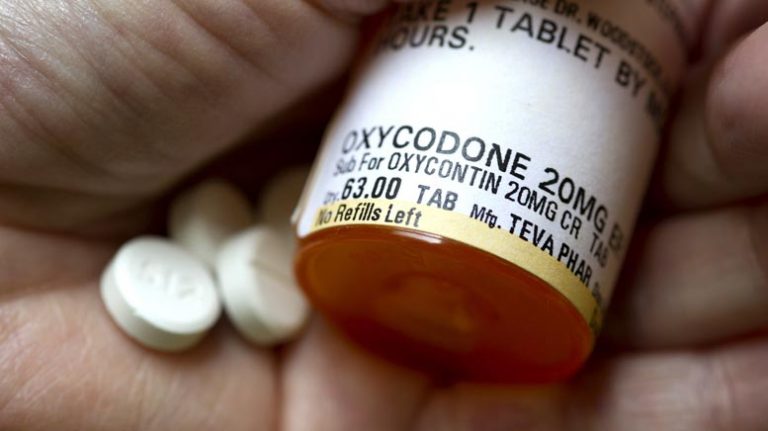
IntelliPharmaCeutics Intl Inc (USA) (NASDAQ:IPCI) is a tiny Canadian biotech with a market capitalization of a little over $40 million at last count. It generates virtually no revenues, and its entire cash holding derives from a $5.2 million public offering that closed at the beginning of last month. It’s down close to 20% on its 2016 open, and 56% on last year’s highs. That’s the bad. The good is this: it’s got an extended release oxycodone candidate that doesn’t need a phase III data to qualify for an NDA submission, and that submission is expected next month. If the FDA approves the application, it’s lead candidate, Rexista XR, will target a $2.3 billion extended release oxycodone market, in which the two currently approved options lack one or more of the features Rexista XR exhibits.
In short, it’s an extremely risky allocation, but with a very large potential upside if the stars align in the company’s favor. IntelliPharmaCeutics just offered an update as to a couple of key loose ends in advance of the August filing. Here’s what’s important, and what to watch going forward.
The update covered two points, with one relating to the drug and the other relating to the application. We’ll address the former first.
The drug, Rexista, is based on a system called the Novel Point Of Divergence Drug Delivery System (NPODDS). It’s pretty much exactly what it sounds like – on administration a drug has an immediate (but limited) loading dose that acts as a initial response to whatever pain it’s targeting. Beyond that, a second load doses, but this one is a steady, sustained release dose. It’s also got a host of abuse deterrent features. It coagulates if crushed and mixed with water, so it can’t be injected. It’s really tough to vaporize without what’s called pyrolization, which is essentially the decomposing of the active oxycodone ingredient. If you grind it with a goal of snorting or chewing it, it releases a blue dye that stains the entry point. It has a low reactive response to alcohol, which helps to avoid dose dumping. There are a few more, but these are the key points. It’s both quick and extended release, and it is really tough to abuse.
The most interesting point is this, however. The drug’s pathway to approval is based on a system called 505(B)(2). There are essentially three ways a drug can go from discovery to market – 505(b)(1) NDA, 505(b)(2) NDA and 505(j) ANDA. The latter is for generic drugs. The first is the standard process (discovery, sponsor conducts phase I, II and III, etc. Rexista’s pathway, 505(b)(2) NDA, is applicable when the drug in question is based on a combination of drugs already deemed safe and effective, and it can rely on data already produced to form the basis of an NDA. The update we are looking at covered the completion of what is essentially the only extensive data IntelliPharmaCeutics has had to produce itself, proof of concept aside, and it relates to the impact of food on Rexista’s efficacy. The result, there is none, which gives it an advantage over Xtampza, one of the drugs that Rexista will be competing against.
The second point relates to a waiver of the costs associated with the NDA submission. These are called user fees, and came about with the introduction of the PDUFA back in 1992. The cost for a submission like the one IntelliPharmaCeutics is putting forward is $1,187,100 for 2016, up a little bit on last year’s fee of $1,167,600. There are four different waiver categories – public health, barrier to innovation, financial considerations (these are mainly reductions rather than waivers) and small business. Given its size and revenues, IntelliPharmaCeutics qualifies for the last one, small business, meaning the FDA will waive its NDA submission fee.
So what are we looking for going forward?
The submission of the FDA should be the next major catalyst, and while there’s no guarantee that the company will hit its target, IntelliPharmaCeutics expects a submission during August this year. Beyond that, PDUFA should come relatively quickly, given the nature of the application. Again, to reiterate, this is a really risky allocation. Financially the company is at the very low end of what’s acceptable. From an opportunity perspective, however, it’s well worth a look as a possible small speculative play.
EDIT: This article initially stated that IntelliPharmaCeutics has no approved products. The company has two approved products, details of which can be found below:
February 24, 2016 press release announcing the FDA approval of 500mg & 750mg Generic Keppra XR: http://www.intellipharmaceutics.com/releasedetail.cfm?ReleaseID=957022
November 18, 2013 press release announcing the FDA approval of 15mg and 30mg Generic Focalin XR: http://www.intellipharmaceutics.com/releasedetail.cfm?ReleaseID=808159




